copywriting
4 Steps To Set Your Content Goals
4 Steps To Set Your Content Goals

Before you sit down to write a single word on your next piece of content, you need to set a goal for the content.
That way, you can craft the content around achieving that goal.
How do you set these goals? That’s what you’re about to find out.
Let’s get started…
Step 1: Consider The Big Picture

Before you pick a goal for an individual piece of content, you’ll want to first review your overall goals for your business and your content strategy. That way, you can ensure that your individual pieces of content do indeed support your overall goals.
Ask yourself these questions:
- What do I hope to accomplish with my overall content strategy?
- Who do I want to help with my business and content?
- What type of content will best help me achieve this goal?
- Where should I post this content?
In other words, you want to determine who you will help and how you will help them.
For example, your overall business (and content) purpose might be to help single moms live balanced, empowered lives (while generating income for yourself).
The key here is that you need to be specific with your goals.
For example, what kind of help will your business provide for these single moms? How many sales do you want to make? How much time can you invest in this endeavor?
Pick measurable, specific and realistic goals for best results.
Then move on to the next step…
Step 2: Determine The Goal For This Content

Now that you’ve got a good understanding of your overall goal (i.e., your business and content strategy), you need to decide the goal for the specific piece of content you’re about to create. For example, do you want this content to:
- Generate traffic? If so, how? (E.G., SEO? Viral Traffic? Other?)
- Build your list?
- Presell a product?
- Get people to join a contest?
- Encourage people to join a webinar?
- Get people to fill out a form (such as a quote form)?
- Get people to call your business?
- Establish your expertise?
- Build your brand?
And similar. Select your goal, and then move on to the next step…
Step 3: Select Content That Fits Your Goal

Now that you know your goal, your next step is to determine the best content format to achieve that goal. For example:
- How to/tutorial.
- Tips list.
- Single tip.
- Opinion article.
- Resource/gear list.
- Checklist
- Worksheet
- Template
- Swipe
- Planner
- Video
- Audio
- Live content (webinar).
- Meme
- Comic
- Infographic
- Product review.
- Product comparison.
- Case study.
- Motivational story.
- Direct ad.
- Search engine optimized content.
And similar.
Example #1: If your goal is to generate viral traffic on social media, you’d likely select a short piece of content such as a meme, tip or quick video.
Example #2: If your goal is to presell a product, then there are two approaches:
- Direct sales approach. Here you use a promo piece of content, such as a product review or comparison.
- Indirect sales approach. Here you create “useful, yet incomplete” content. For example, if you’re selling a weight-loss course, then you might offer five weight-loss tips. The content is genuinely useful, but it’s incomplete because it doesn’t completely solve the reader’s entire problem. You can then point them to the course for additional help.
TIP: Be sure to pick a topic that also helps you achieve your goal. You may need to do some market research to be sure this is a topic that your audience really wants.
Pick the format and topic that best fit your goal, and then move on to the next step.
Step 4: Craft Content Around Your Goal

Now that you’ve decided on a goal, format and topic, you can start creating your content. Be sure that you structure your entire content around achieving your goal.
Example #1: If you’re looking to generate sales from your free content for a paid offer, then your free content should include the benefits of the paid offer.
Example #2: If you’re looking to build your expertise, then be sure your content is “fresh” – it should include a unique angle/approach to the topic, and/or unique tips or other information that people can’t find anywhere else.
NOTE: Please keep in mind that no matter what the goal is for your business, the goal for your audience is always to provide useful content that will help them solve their problems, reach their goals and/or enjoy their interests.
No matter what your goal is, you’ll want to end the content with a call to action (CTA).
Your CTA should have the following parts for best results:
- Tell people what to do.
- Tell people how to take that step.
- Give people a good reason to act now.
A good reason to act now may take multiple forms:
- When there is a (real) limited time only offer that would provide additional paid help to your audience. E.G., “This offer ends soon, so grab your copy right now…”
- When there is a built-in deadline that is important to the audience. G., “And do it now, because your wedding day will be here faster than you think…”
- When there is a legitimate danger to the audience if they don’t act quickly. E.G., “Don’t become a victim who gets scammed or robbed – find out how to protect yourself from con artists and thieves when you travel overseas…”
For example, here is a CTA for joining a list:
Your next step is simple: click here to join the mailing list in order to get “Part 2” of this article. And do it now while you can still get this valuable information for free.
Let me share with you a few other templates you can swipe and use:
Purchase a Product:
If you liked these five tips, then you’re going to love getting your hands on the complete guide to [achieving some result]. Click here to get your copy – and be sure to use coupon code [insert coupon code] to save [$ amount]. But hurry and order now, because this offer expires [insert when it expires].
Join a Contest:
How would you like to win [describe two or three of the top prizes]? It’s easy to enter – just [describe how/what to do]. Click here to enter for your chance to win – and hurry, because this contest ends soon.
Share this Content:
If you loved this content, then you’re going to want to share the smiles with your friends. Click here to share it on Facebook, because you know your friends are going to love this as much as you did.
NOTE: A quick word about “urgency” … while there is no doubt that you can forcefully call people to action with manipulation and get higher conversions, please don’t do this. Rather than attempting to talk people into something they don’t really need by pushing their internal “fear of missing out” button, give them a compelling reason to make an intelligent decision to buy your product if it’s something they actually need.
Now, let’s wrap this up…
Conclusion

Some marketers push out content just to fill space. Don’t do that. Instead, create content that helps you achieve a goal. You can get started doing this with your very next piece of content by utilizing what you just learned inside this checklist.
If you really want to know more about the power of content marketing and blogging, you can take a look at the Rapid Blogging Blueprint training course or if you just want a few pointers for now you can grab the featured resource below for a free detailed blogging report; download, read it and take action 🙂

Content Creation: Batching Your Tasks
Content Creation: Batching Your Tasks

Content creation is hard work, especially when it comes to written content. It doesn’t matter whether you’re writing the content yourself, or someone else is doing it for you. Ultimately, someone has to sit down and put pen to paper… or words to screen.
If you approach content creation in a linear fashion, it will take you much longer because you’ll constantly be switching between tasks.
For example, writing and editing are 2 different processes. If you edit as you write, your creative process will be jarred, and you’ll not achieve a state of ‘flow’ which is what most writers strive for.
The best way to stay organized and speed up content creation will be to batch your tasks. Below you’ll find 7 tasks to batch.
Why Is Batching So Effective?

Batching is basically grouping similar tasks and doing them all at one go. It’s almost as if you’re in an assembly line at a factory repeating the same task over and over.
This will not only increase your speed, but you’ll find it easier to focus on the task too. You won’t need to constantly go back and forth between tasks.
That’s when the speed truly builds up and you’ll make up for lost time and more. Now let’s see how to batch your tasks.
Decide On Your Task For The Day

Content creation generally revolves around 5 tasks:
- Researching
- Outlining
- Writing
- Editing
- Publishing
You do NOT want to do them all in one day. So what you’ll do is decide what task you’ll do for the day. Ideally, you’ll want to complete all the work associated for a specific task before moving on to the next one.
For example, you might decide to spend Monday and Tuesday doing research. Wednesday may be for outlining. And from Thursday to Saturday, you’ll write like a maniac.
On Saturday, you’ll edit and proofread what you wrote… and on Sunday, you’ll publish the content.
This is just a general idea. Decide for yourself what you’ll do each day and only focus on that task.
Work In Pre-Determined Time Blocks

The next step will be to decide WHEN you’ll do the work. You don’t want to adopt a haphazard approach to content creation – or you’ll never get the job done.
Decide on a time block when you’ll begin and end the task. For example, you may decide to do your research from 9am to 11am. That’s fine. Just make sure you stick to it.
The best way to overcome this problem will be to sit down at your desk at the specified time, whether you like it or not… and give yourself just 2 minutes to write. Anyone can do that.
You’ll realize that once you start, most of the time you’ll keep going. Use this technique and you’ll trick your mind into being less resistant to the task at hand.
Do Your Research

In step #3, you’ll do ALL the research you’ll need for you to write later on.
This is especially important for non-fiction. Keep your research notes organized so that you can refer to them easily.
Remember to create a customer avatar of your ideal prospect; this way you can write all your content in a way that is incredibly appealing to him or her and you will be much more likely to get them to take a particular action (you are adding a call-to-action in your content, right?).
Outline Your Content

Having an outline will increase your writing speed exponentially. Of course, your outlines will be based on the research you’ve done.
Make a list of the points you’ll cover and so on. Even if you’re typing on a computer, having your outlines written on paper in front you is recommended.
In this way, you can glance at your outline as you type rather than switching between tabs and so on.
Write Like A Maniac

This is where the pedal hits the metal, and the rubber meets the road. Once your outlines are all ready, start writing your content.
There’s a saying – “Write drunk. Edit sober.”
So when you write, just let your thoughts and words flow. Don’t be overly concerned about typos, etc. The goal is to get the content written.
Even if you’re creating content for infographics, social media posts, sales copy, etc. this principle will apply. Write first… and churn out ALL the content that you need to complete!
Take Time To Edit

Once all your content is done, it’s time to edit the content and fix the errors such as spelling/grammar mistakes, sentence construction issues, typos, etc.
This may seem an onerous task, but it can have a significant impact on the final piece of content, so can’t be overlooked.
Publish Your Content

This is the most fun part of the lot. You’ll either be publishing the content on your blog or turning it into a digital product to sell. You might have other plans for it, but the principle stays the same.
Publish your content when it’s all completed. A common mistake beginners make is to create 1 piece of content, do all the steps above… publish it… and then run off to repeat the process with the next piece of content.
Can you even imagine how tiring and time consuming that will be?
By now you’ll realize that while batching your tasks seems to be a more delayed approach, it’s actually faster when you look at the big picture.
Adopt the pointers in this article and you’ll be a lean, mean, content creating machine.
If you really want to know more about the power of content marketing and blogging, you can take a look at the Rapid Blogging Blueprint training course or if you just want a few pointers for now you can grab the featured resource below for a free detailed blogging report; download, read it and take action 🙂

6 Proven Copywriting Techniques That Work
6 Proven Copywriting Techniques That Work

If you’re wondering why your landing pages aren’t making you as much money as you had hoped for, you might be using common landing page copywriting techniques the wrong way.
If that’s you, read on to find out how to increase your marketing conversion rate simply and effectively.
This is not just a ‘copywriting for beginners’ post, and you aren’t going to learn how to become a world class digital copywriter in the space of a few minutes!
While the six copywriting techniques we’re about to cover have been proven to work, too many marketers use them in a way that cancels out their otherwise potent conversion power.
This is a real shame because your landing page could be raking in larger profits if you only paid closer attention to how you implement these proven techniques.
The good news is that once you become aware of how badly you may be implementing these techniques, you can quickly fix them.
The key is to become aware that you’re using them the wrong way in the first place.
1: Tell A Story To Personalize Your Landing Page’s Value

Storytelling is one of the most powerful landing page copywriting techniques you can use. Not only do you pull your reader into the scenario your offer addresses, but you also create emotional urgency with your offer.
Once emotionally engaged, chances are much higher that your viewer would enter his or her email address or make a purchase.
Awesome, right?
Well, sadly, too many marketers tell stories that are simply worthless.
They are duds.
They seem too good to be true. They show extreme conditions. They simply fail to convert.
What went wrong?
Instead, these low converting landing pages tend to present almost ‘too good to be true’ situations.
If you want your landing page stories to convert, take the most probable circumstances faced by your target audience members and base your stories on these.
These realistic stories are more believable because more of your audience members can relate to them.
2: Use A Question As A Header Title For Your Landing Page

Questions are very powerful ‘centering’ devices because they draw your prospects attention to one central concept or a small set of concepts. Questions help narrow and define the problems and situations your offer addresses.
If a question is well-defined, it is easier to present your solution and it is easier for the prospect to see the value in your solution.
To fix this problem, figure out the primary concern of your target audience members and pose relevant header questions.
3: Change Your Font To Emphasize Key Points Of Your Pitch

When you’re talking to somebody, you normally change your tone of voice when you are trying to emphasize certain things. By the same token, text in bold or italics or larger, ‘special’ fonts tend to be noticed more.
To maximize the impact of special fonts when emphasizing key points in your landing page text, make sure you use them SPARINGLY.
Keep special fonts to a minimum so when you do emphasize certain words, they truly STAND OUT.
4: Use Testimonials From Happy Customers

One of the most powerful selling tools you can use is social proof. People are more likely to buy whatever you are offering if they see that other people have had positive experiences with what you’re selling.
Pretty simple, right?
In fact, this is so simple that you’d think this would be hard to screw up.
Wrong. Marketers actually blow this all the time.
The key problem is RESTRAINT.
Make sure you only use REAL testimonials on your landing page.
Real testimonials are grounded in reality. This means there’s a mix of both positive and not-so-positive elements in the testimonials.
Above all else, use testimonials from happy customers who got results that are not outliers.
Otherwise, your testimonials might seem too good to be true and won’t carry much weight with people you’re trying to convince.
5: List Out The Benefits Of What You’re Promoting

One of the most common, yet powerful, copywriting tips you’ll ever come across is to write out benefits of your product, not features.
People buy based on benefits, not features. Benefits solve their problems. Benefits are easier to understand. Features, on the other hand, tend to degenerate into so much sales talk and technical jargon.
Sadly, too many marketers list SO MANY BENEFITS, they flood their prospects with information. This data overflow leads to, you guessed it, lower conversions.
Of course, you need to cross reference this information with the landing pages of your competitors to make sure you’re operating in the right ballpark.
6: Link Your Call To Action With The End Result Your Target Customers Want

One of the most useful copywriting conversion tricks you could ever learn involves pairing a call to action to a specific benefit the reader wants.
For example, instead of relying on the tired and weak “Click Here” try using “To finally get rid of the high costs and headaches of random outsourcing, enter your email here to take your labor sourcing results to the next level!” See the difference?
Well, marketers tend to blow this technique when they end up listing a ton of benefits with the call to action. Not only does this result in horrible run on sentences, this dilutes the conversion power of your call to action.
The reader is simply too confused to take any action at this point.
The solution?
Focus on one central benefit and pair that with the conversion action.
This is quite risky because your target audience might be looking for a number of benefits instead of just one.
This is where split testing comes in. Test different landing pages with different action-tied benefits and see which pages produce the best results with your traffic.
Don’t Be A Victim Of ‘Proven’ Landing Copywriting Techniques
Make no mistake about it, the landing page copywriting techniques we’ve just covered can turn your landing pages into quick winners.
If you want to know more about avoiding these and other copywriting mistakes, take a look at the featured resource below where you can download a copy of a free report, Copywriting Blunders, so you will be further forewarned. Download, read it and take action 😊

Common Elements In Highly Converting Sales Copy Part 2

This post is a continuation of looking into the common elements present in highly converting sales copy (you can see the first post here). In it we looked at the headline, storyline, sub-headlines, testimonials, and statistics to increase confidence.
Now lets’s continue and firstly let’s look at using media such as video and images.
Using Images And Videos In Your Copy
Sticking to text alone in your sales copy will be a big turn off for most prospective customers. Big, long blocks of text look boring and overwhelming. People have short attention spans now, so you need to break that text up with images and videos.
You can use stock photo sites like iStockPhoto or DepositPhotos to break up the text. If you want to use free stock photo sites you can check out Pixabay, Pexels or Unsplash, but if you can afford to pay for your images ,they will be better and more unique.
For example, if you’re in a section where the sub-headline and storyline are discussion frustration for diet failures, you might want to use an image of a man or woman feeling frustrated in front of a plate of food or on a weight scale.
With video, keep it short if you’re using it to break up the text sales copy. You don’t want to have five 20-minute videos on the page. Just keep it under 3 minutes each. Sometimes, it might require more, such as if it’s a demo of a software.
Don’t have the videos auto-play. Some marketers do prefer this, but most consumers don’t. If they have their volume up and they’re at work or somewhere quiet, and suddenly your sales page starts blaring, they’ll leave quickly.
When you host your video, make sure you eliminate as many click out options as possible. For example, if you host on Vimeo, it automatically defaults to make the Vimeo logo clickable, your name, the title of the video, and more clickable – all taking your customer away from the sales copy.
Strategic Bullet points To Help Clear Up Confusion
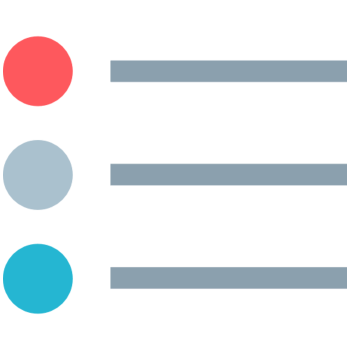
Bullet points are a blessing to most consumers who are short on time and who want to just get a quick rundown of what your product can do for them. The benefits are what many marketers focus on with their bullet points.
But you can also include pain points as bullet points. For example, you might have a sentence that says, “Wouldn’t you love to…” and then have bullet points addressing their pain points – stop having to shop in plus sized stores, avoid the shame and embarrassment of swimsuit season, etc.
Another way to strategically use bullet points is to have a rundown of what all is included in your product. You can say, “In this bundle, you’ll get…” and then go into detail about what all is included, such as – a 38-page PDF guide, 10 checklists, 5 videos you can refer to whenever you need them, and so on.
A Guarantee Can Close The Deal

A guarantee can be both an image and text explanation. You can get stock photos that say “Money Back Guarantee 100%” or instead of 100%, they may say 7 days, 30 days, 90 days and so on.
You can use bold text and a note that simply explains your guarantee (or lack thereof if you decide not to offer one). The main thing you need to do is remember which guarantee you chose and abide by it.
Don’t offer a 60-day no questions asked guarantee if you’re going to harass your customer about why they want a refund and then refuse to give it to them. When you do this, word gets around and it could even put your accounts on various platforms at risk.
Create A Call To Action To Guide Them To The Finish Line
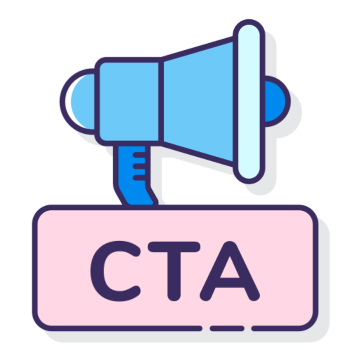
Authentic urgency is lacking in the online marketing industry. Too many unethical sellers use false urgency to try to get a sale. Instead, create real urgency and scarcity because in future launches, people will know not to wait.
Never expect people to automatically know to click the buy button, download now, and get started. You have to state it and guide the customer through every step along the way.
Working With Buy Button Options
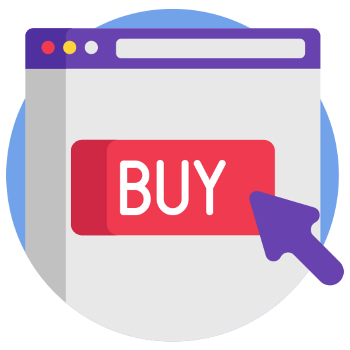
With buy buttons, you have the option to use a button that a platform provides for you – like PayPal, Warrior Plus or JVZoo. But you can also download and use a button of your choosing.
For example, on JVZoo, there’s a button option that says 100% satisfaction guaranteed, so it would need to match what you want to stand behind.
If you want to have a bit more freedom, you can use a payment processor such as Thrivecart and this is probably more advantageous in the long run.
As far as placement, some people only put one buy button at the very bottom of the page, while others place them throughout the sales copy. You may want to have it at the bottom with a countdown timer right above it, showing when the launch pricing or sale ends.
The Importance Of A Simple Post Script And Signature Area

Somewhere at the bottom, make sure you have a digital signature along with your image. People like to know who they’re buying from. You can either upload your real signature or create one from a variety of fonts online.
A good way to craft them is to use the first P.S. to restate the main benefits and what’s included. Use the second P.S. to reiterate the sense of urgency and what happens if they miss out on this great deal.
OK, so there you have the most common elements in highly converting sales copy. Add these to your sales pages and you should see immediate results!
And remember, if you want to have great results writing highly converting copy, you need to understand that this is difficult for many people as there are so many mistakes that can have a dramatic effect on conversions.
To help you avoid these mistakes, take a look at the featured resource below where you can download a copy of a free report, Copywriting Blunders, so you will be forewarned. Download, read it and take action 😊

Common Elements In Highly Converting Sales Copy Part 1

When you’re new to writing sales copy, it can feel a bit daunting trying to remember what all needs to go on the page to convert a visitor into a buyer. But once you learn the fundamental elements that help inform and sway your audience, you’ll be able to utilize them repeatedly to grow your business.
The great thing is, you get to decide, based on what you’ve seen in the marketplace and what you feel comfortable with, what to put in your own copy. You can even split test the page to see what works best – one headline versus another or three testimonials versus zero, for example.
Creating Your Main Headlines
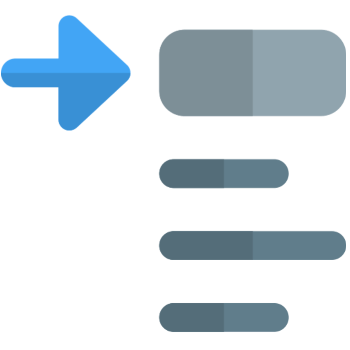
When you’re working with your primary (larger) headlines, you’ll often see certain strategies being implemented in niche marketing. For example, one common starter headline used to be “Who else wants to…?”
Another thing you can do is ask a question or discuss the biggest benefit or pain point that a person viewing your page might have. You can find books on Amazon and elsewhere that do nothing but teach you the strategy of writing persuasive headlines, and many will have built in swipes for you to use when tailoring them to your own niche.
You can also find free swipe files online that you can tweak.
What Will Your Storyline Contain?

After your major headline(s), you’ll typically have your main storyline. This is where you introduce the slant and tone of your sales letter. You might be all hype talking about money or pounds lost.
You might have the demeanor of a drill sergeant or that of a coddling, kumbaya leader. This is where the prospective customer will gain some insight about what kind of product (and person) they’re about to encounter.
With storyline, you’re making that connection that builds trust between you and the consumer. You’re letting them know you understand their problem and that you have enough empathy to help them through it.
Drilling Down Into Specifics with Sub-headlines

While your main headline will discuss the biggest issue, like earning money or losing weight, your sub-headlines can dig down into some of the other aspects of their pain points.
Think about the benefits, for example. Earning more money does many things – gives them peace of mind, helps them live the life they want with vacations, cars, homes, etc. It allows them to be their own boss.
When you have sub-headlines talking about different things, the consumer can scroll past items they don’t care about and find the ones they do. It may also give them insight into things they hadn’t considered yet.
Make sure that in your sub-headlines, you’re giving everything away. You want it to plant a seed or an idea in their minds of what they’ll gain by buying your product. Some marketers go too far and say too much in their copy.
Using Testimonials in Your Sales Copy
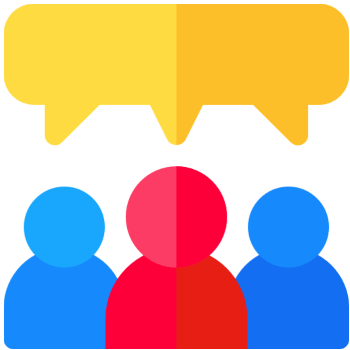
Testimonials are not necessary to your sales copy, but real ones probably do help to convince buyers that you and your products are legitimate and worthy of consideration. If you don’t have any natural testimonials, you can solicit them.
If possible, ask them to provide a video testimonial, because those are always more effective. Don’t use phony stock photos and make up testimonials. This almost always gets found out and then you ruin your reputation because customers won’t trust you anymore.
Gather Your Statistics To Boost Confidence In Your Product
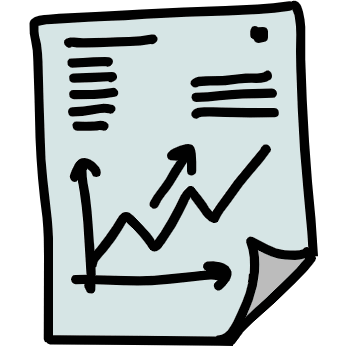
Statistics and numbers can be very convincing when it comes to strengthening your sales copy. It verifies your information and advice from outside sources and supports your recommendations.
For example, you might find a statistic that says 8 out of 10 people succeed with one diet while only 4 out of 10 succeed long-term with another. That’s a fact that would give the consumer more certainty that they’re choosing the right one.
Failure statistics are also effective. If you can say that 70% of people fail when they do something, it’s a warning to readers that they need to avoid that and do something else (whatever it is you’re recommending).
One statistic you can look up is the number of sufferers or people in the same boat as someone else. For example, over 300 million people worldwide have diabetes. Talk about if the problem is growing or if it’s getting under control.
We’ll continue this in part 2, but in the meantime if you want to have great results writing highly converting copy , you need to understand that this is difficult for many people as there are so many mistakes that can have a dramatic effect on conversions.
To help you avoid these mistakes, take a look at the featured resource below where you can download a copy of a free report, Copywriting Blunders, so you will be forewarned. Download, read it and take action 😊








